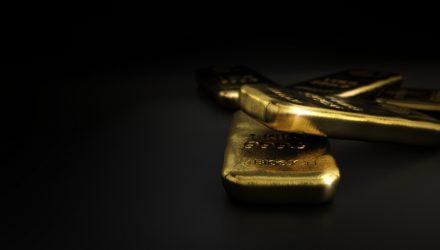Investors who are delving into gold should consider an ETF strategy that provides exposure to royalty and streaming companies, or the “smart money” of the space.
On the recent webcast, Hedging Against Volatility: Should You Consider Gold?, Frank Holmes, CEO and Chief Investment Officer of U.S. Global Investors, and Robert Moriarty, Founder of 321Gold.com, looked to gold exposure as a way to better manage portfolio risk.
Gold is more than an alternative asset. The precious metal has produced long-term returns and stabilized investment portfolios. Over the past two decades, gold has been the second best performing asset, returning an annualized 7.7%, compared to the S&P 500’s 5.6% gain.
Supply and demand have helped support the yellow metal. For example, central banks have acted as big net buyers of gold since 2010, acquiring as much as 651 metric tonnes of the metal in 2018.
Holmes highlighted two major trends that could support the gold outlook, including the “fear” trade and the “love” trade.
On the so-called love side, we are seeing increased demand from international buyers, notably emerging market consumers in the quickly growing China and India markets, which make up 40% of the world’s population. The growing middle class in emerging markets exhibit a penchant for gold demand as a safety play and for jewelry.
The precious metal has benefited from the fear trade as well, with a potential recession driving increased demand for gold as a safety play. We have also witnessed government policy on both the monetary and fiscal side, such as interest rates, money supply, tax, regulations and spending, affect the outlook for gold prices. An overarching theme in recent months has been the trade wars as the U.S. and China make up 40% of global GDP. Meanwhile, with the economy slowing and the Federal Reserve easing up on its monetary policy outlook, more investors are warming up to gold for a safety play to hedge any further risks down the road.
Meanwhile, on the supply side, we are seeing the amount of gold in major discoveries trending down for years, with falling gold exploration budgets alongside the lower projected new gold in major discoveries. Production from gold producing countries are also mostly projected to steadily decline in the years ahead.
Given the bullish trend in gold, Holmes advises investors follow the 10% Golden Rule, which recommends a 10% weight in gold and gold-related assets. We are already witnessing major market players picking up gold as a simple way to diversify a traditional portfolio of stocks and bonds to diminish downside risks and potentially enhance returns. For example, Holmes pointed out that billionaire Ray Dalio increased his exposure to gold in the first quarter of 2019 and Paul Tudor Jones’ has named gold as his favorite trade for the next 12 to 24 months.
Along with direct gold exposure, investors can consider gold miners and sector-related ETFs like the U.S. Global GO GOLD and Precious Metal Miners ETF (NYSEArca: GOAU), a smart beta offering that tracks a specialized or rules-based index to help hone in on quality players in the gold mining space. The underlying U.S. Global GO GOLD and Precious Metal Miners Index uses quantitative analysis to pick stocks, with a particular focus on royalty companies.
U.S. Global believes royalty companies are a superior way to target the gold mining segment. Royalty companies are not responsible for costly infrastructure so huge operating expenses can be avoided. These companies hold highly diversified portfolios of mines and other assets to mitigate concentration. Additionally, they generate some of the highest revenue per employee of all public companies while growing cash flows and dividends – royalty companies’ dividend rates have been growing 12% over the five-year period ended March 2019, compared to a 9% rate for the S&P 500.
Financial advisors who are interested in learning more about the gold space can watch the webcast here on demand.
